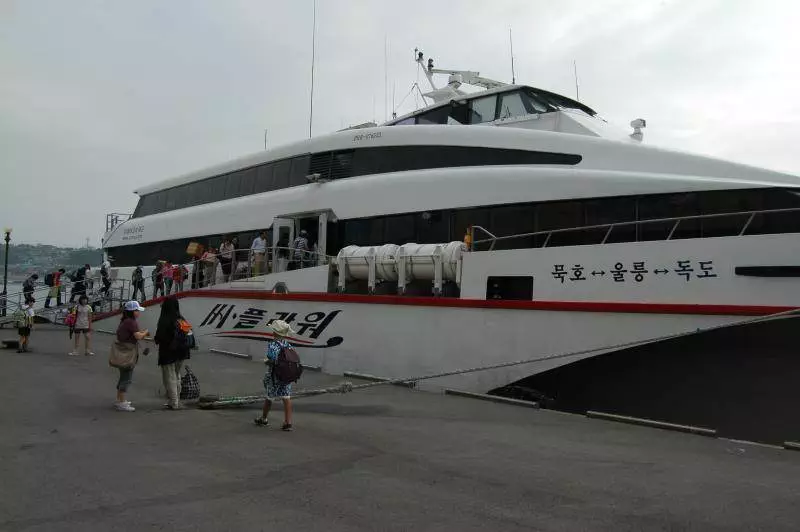
One of Korea’s most distant islands, Ulleungdo retains a certain mystery and exoticness held by few other destinations in Korea. Perhaps it’s because of its distance from the mainland, or perhaps it’s because of the unusual difficulty of actually getting there. From Seoul it’s a 3 1/2 hour bus ride to Donghae, a short taxi ride to Mukho ferry terminal (묵호 여객선 터미날), then a 2 1/2 hour ferry ride — not exactly a day trip. If you do make the trip out, there’s more than enough to make the trip worthwhile.
Having been Korean territory since the Silla dynasty, Ulleungdo is the above-water portion of an extinct volcano. There’s plenty of volcanic rock around, although there’s almost no flat land to speak of. Roads are narrow, and occasionally spiral or U-turn up the side of the island. The map of the island’s roads almost look like those of a roller coaster in a few places — one reason how a one-way trip around 3/4 of a small island can take an hour and a half. The road that will completely go around the island isn’t even finished yet — stay tuned for that to develop.
Ulleungdo’s tourist information is quick to mention the five plentiful things — aromatic trees, wind, beautiful women, water and rocks — and three nonexistant things — thieves, pollution or snakes. With the exception of the beautiful women, I’d tend to agree (perhaps ‘weather-worn’ applies to both the rocks and the women). In any case, stop by the tourist information center right by the harbor to pick up an English map of the island.
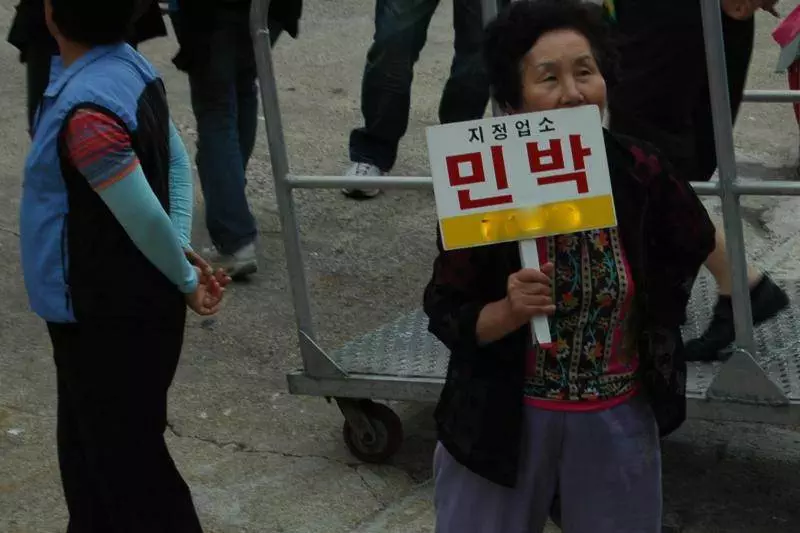
After the aforementioned ferry trip, I arrived at Ulleungdo ferry terminal (울릉도 여객선 터미날), and was immediately approached by ajumma holding signs for minbak (mom-and-pop hotels or homestays). Unless you’re interested in staying in a small room for an inflated price, avoid the sellers who approach you — there’s plenty of lodging around the harbor.
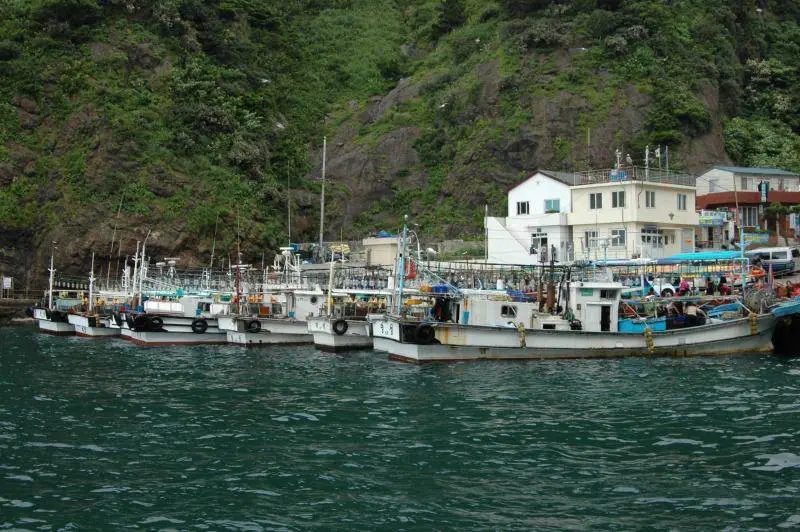
The harbor — far from natural but it works all the same.
After finding a hotel, I walked to the bus stop (walk up the left hill from the harbor) and caught the bus going west. The island has exactly four bus ‘routes’, and you can catch all of them from this bus stop. I took the one going west towards my first destination.
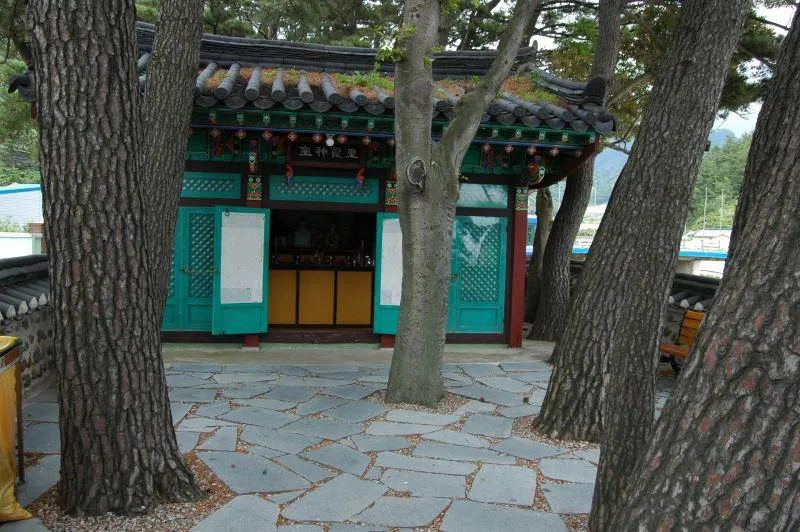
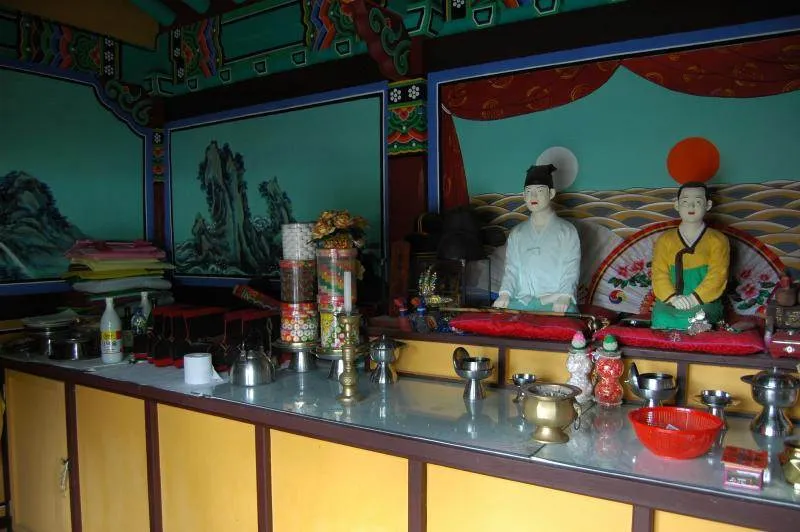
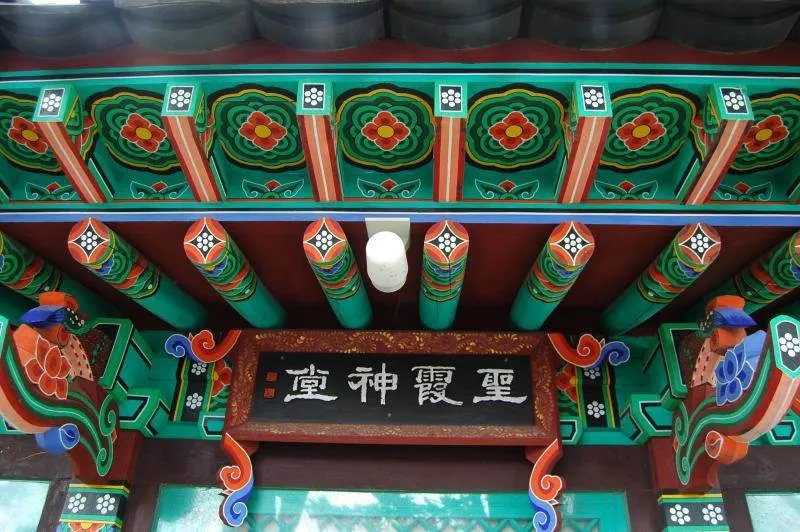
Located on the western side of the island, Seonghasindang Shrine (성하신당 전설, 聖霞神堂) is in Daeha-dong, the first permanent settlement on the island. There’s an interesting legend to the shrine, which I’ll quote from KBS World:
In the 17th year (AD1417) of the reign of King Taejong during the Joseon Kingdom, Kim Inu was nominated as commander in charge of evacuating all the residents from Ulleungdo Island to the mainland in order to empty the island. He gathered all the residents on the island and prepared to evacuate the people to the mainland. On the night before the departure, Kim Inu had a dream. The God of the East Sea appeared in his dream and ordered him to leave one young couple on the island. However, he forgot the dream and tried to sail to the mainland with his people. Then suddenly, a rough storm prevented him from sailing to the mainland. The fearful storm continued the next day, too. He stayed for several days waiting for the storm to stop. Then he remembered his dream and he chose one young couple from among the island residents and ordered the young couple to return to their village. As the couple left the ship to return to their home village, the rough sea became calm immediately. Kim Inu and the island residents could now return to the mainland safely, leaving the young couple on Ulleungdo Island. Kim Inu could not forget the incident, and he was appointed commander again 8 years after he returned to the mainland. He sailed again to Ulleungdo Island and went to the village where he left the young couple. He was surprised to see the corpse of the young couple dead in an embrace. He built a shrine to console the sprits of the dead couple and repent of his sin and crime. Thereafter, whenever people construct a ship on Ulleungdo Island, they board the ship from this village and pray for safe sailing at the shrine.
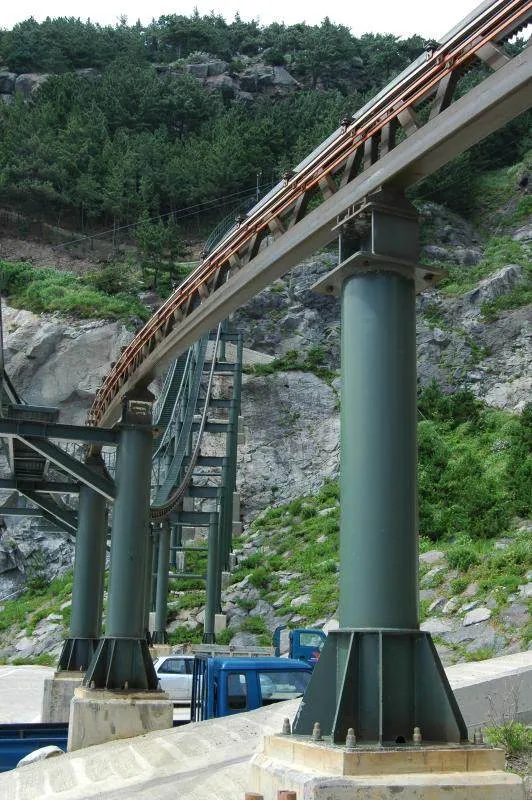
While around the area, I meandered to a monorail — that wasn’t on my map! — that wasn’t operating because of high wind. Too bad, though, as it would have made climbing the mountain a lot easier. Instead, I continued to 황토굴 (Hwangto cave), which sounds more impressive than it actually was:
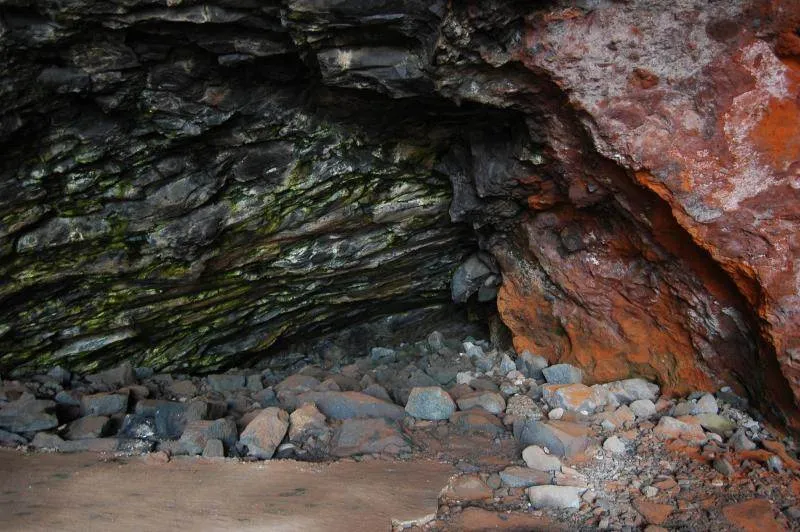
Exactly. When one thinks of a cave, one imagines being able to go underground and explore the area… The colors are nice and all, but five minutes later I found myself staring at my next options:
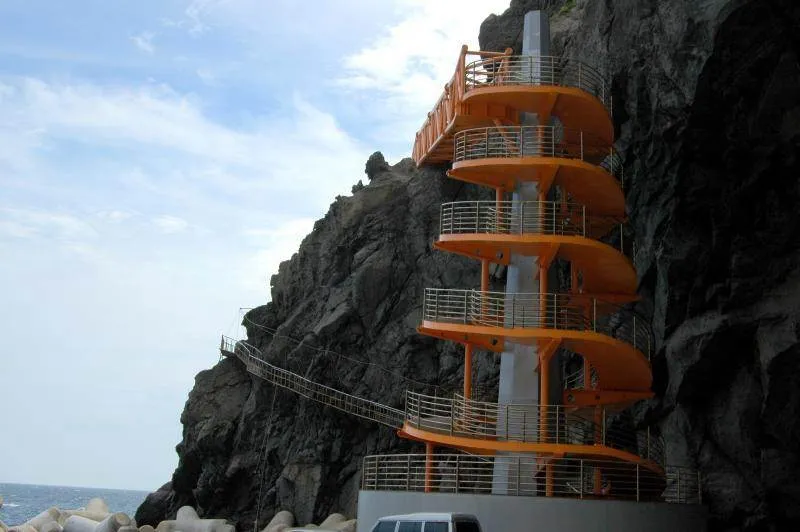
Right next to the cave were two staircases — an older staircase that made climbing the mountain look rather precarious and a newer orange spiral staircase. Guess which one I took?
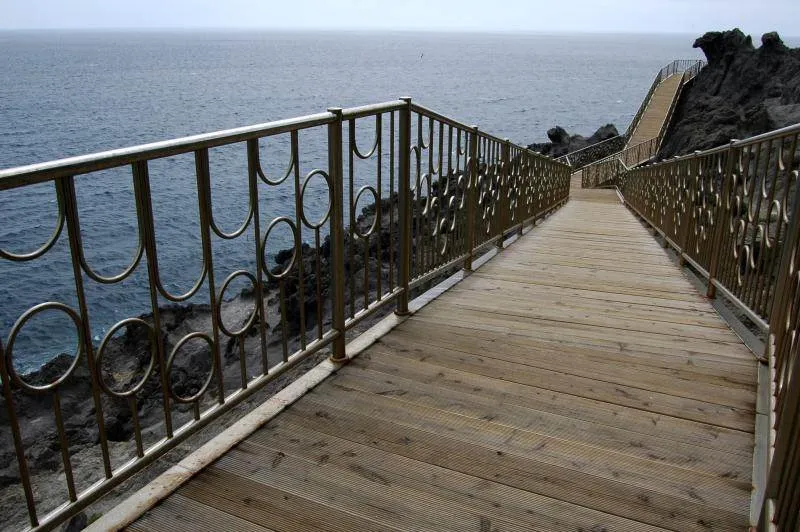
Whichever staircase you chose, both led to a relatively level walkway along the coast and a gorgeous view:
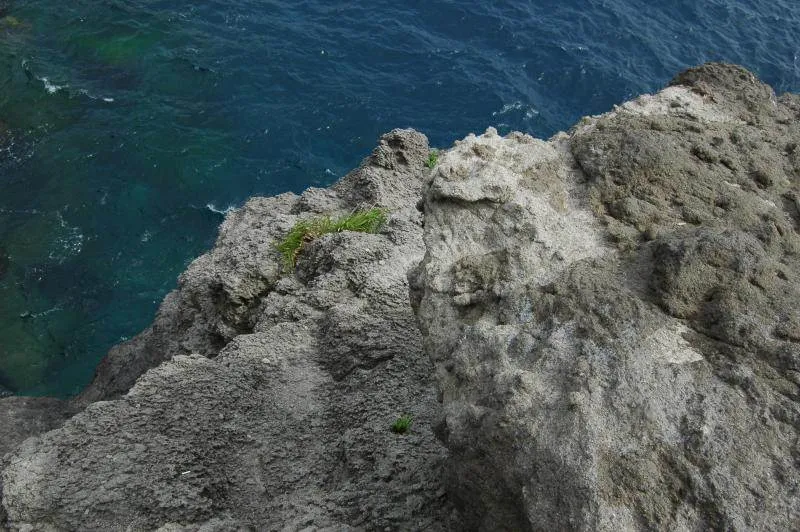
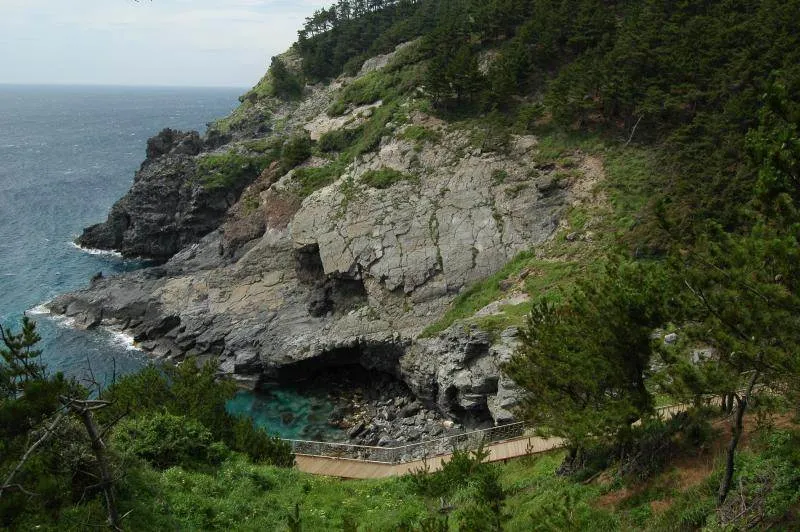
The walking path continued around the island for plenty of kilometers if you’re of the hiking persuasion; for now, however, it was time to head back to the hotel.
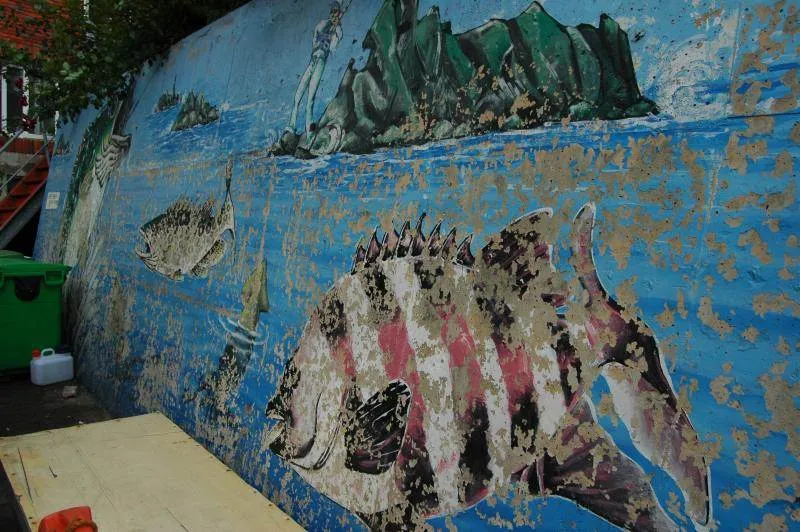
After catching the bus back to Do-dong and the harbor area, I went back to my hotel room to freshen up and relax for awhile.
Head to part 2 to see how the locals party, the walking by the harbor, and what happened the next day….
Directions to Ulleungdo: Take a ferry from either Donghae city in Ganghwa-do (Mukho Port) or Pohang city in Gyeongsangnam-do(?). Only one or two ferries make the 2 1/2 to 3 hour trip every day — reserve in advance at daea.com (Korean only) or enlist the help of a tourist service like 1330 to make the reservations. Before boarding, you may be asked for your passport — it’s a good idea to bring it with you.
Read part two and part three!


